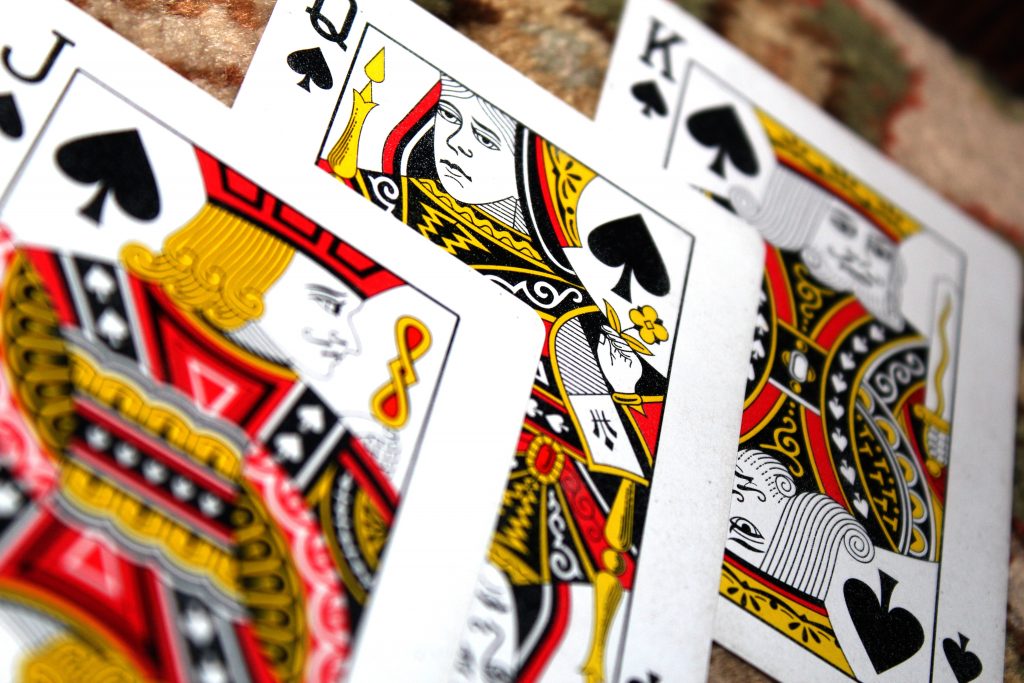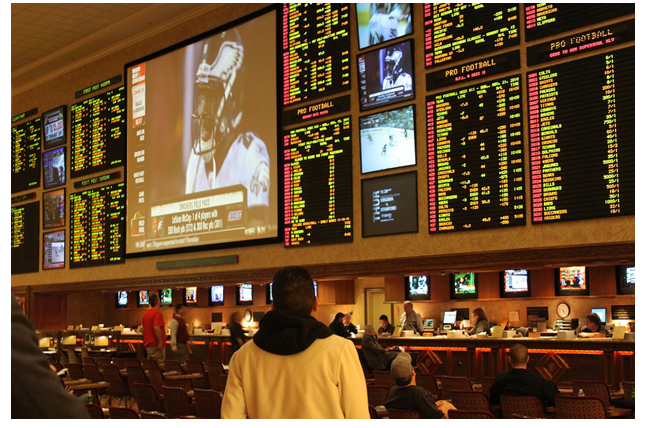Over the last decade, card games have become more popular than ever. Live tournaments, online casinos, and mobile gaming apps have all helped spur this along, with more card games becoming popular with every passing year. Here, we’ll be looking at three card games that are already receiving a lot of attention and will surely become more popular in the future.
1. Baccarat:

While poker may be the first strategy card game that pops into any player’s head, baccarat requires just as much tactical intelligence and often appears alongside poker games at live and online casinos.
A standard game begins with the player betting on either their own hand or the banker’s hand before the cards are dealt. Once this has been done, the dealer will then give two cards each to the player and banker, all of which must be face down. The dealer then slides one card out from the player’s hand, placing it face up before doing the same with the banker’s hand. Two more cards are dealt, and the maths begins. Tens and face cards have no value while an ace is worth just one point and all other numbered cards represent their exact value. For instance, if the player has a nine and a six their total is 15. However, you don’t necessarily want to have a bet on the highest total if you are the player, as it is the number closest to nine that wins.
Of course, the best-case scenario is that the hand the player bet on is a ‘natural win’, meaning that the first two cards dealt a total of either eight or nine, but this is rarely the case. More often than not, the dealer will have to decide if the player should receive a third card, which is allowed only when the player’s cards total 0 to 5 and the banker’s hand doesn’t already total eight or nine. The banker may also receive a third card under the following circumstances:
- The Player’s third card was 9, 10, ace, or a face card, and the Banker’s total is 0-3.
- Player’s third card 8, and the Banker’s total 0 – 2.
- Player’s third card 6 or 7, and the Banker’s total 0 – 6.
- Player’s third card 4 or 5, and the Banker’s total 0 – 5.
- Player’s third card 2 or 3, and the Banker’s total 0 – 4.
Once all the cards have been dealt, it’s time to recalculate and see which hand’s total is closer to nine. If there’s a draw, neither hand wins, and the game either starts again or players may leave the table.
Clearly, baccarat isn’t one of those card games that you can just sit back and relax through while the cards are being dealt. You must be vigilant, pay attention to the cards, and, most importantly, you must have a strategy in mind. Fortunately, there are plenty of baccarat strategies you can apply including the one-sided baccarat strategy, the trend switches combat baccarat strategy, and the breaking the doubles strategy. Each of these requires quick-thinking, quick maths, and an ability to accept when you’ve lost a game, so you may want to practice before going for the big money.
2. Rummy:
Over the last decade, many card games have become popular at online casinos often receiving numerous different makeovers and versions to ensure there are all sorts of different styles to play. Rummy, on the other hand, seems to have gone down a different techy road and is probably most popular as a mobile game. A simple search on the Google Play store will bring up dozens of rummy games (sometimes known as gin), many of which even enable you to play live with other rummy enthusiasts around the world.
Whether you’re playing on your mobile or face-to-face, though, the same rules apply. First of all, the amount of players decides how many cards everyone is dealt:
- 2 to 4 players: 10 cards each
- 5 players: 6 cards each
- 2 or 5+ players: 7 cards each
A scorer and dealer must have been designated at the start before the dealer shares the hands out and places the rest of the deck face down in the center. The card at the top of this pile (known as the stock) is turned over and placed beside the larger pile. The game can now begin with the player on the left of the dealer, who must decide whether to pick the upwards facing card up or choose the top card from the stock. Which one they choose depends on whether the upwards card will help them create a run (a consecutive sequence of three or more cards of the same suit) or a set (three or four cards of equal value), known as a meld.
If they can make a meld, they may set those cards aside, but if not one card from their hand (never the one they just picked up) must be placed on top of the upwards card (also facing upwards). Each player must do the same in turn, shuffling the stock and starting again until it is depleted completely. The players with the most runs and sets are victorious.
3. Bridge:
Finally, we have a bridge – a card game that has been passed down for generations. It’s sophisticated, subtle, and more popular than ever, with ITV reporting in 2015 that over 300,000 people play in Britain on a regular basis. We can probably assume that this number has grown even larger over the last few years, as the bridge has received both the casino and mobile app treatment. This isn’t surprising at all, considering its already long-established popularity and the fundamentally social nature of the game, which has only become more apparent in online and mobile games.
So, how is the bridge played? There must be four players divided into teams of two, with players sitting opposite each other forming partnerships are known as North-South and East-West.
Bidding is then started, but it’s important to know how the game is played first. A total of 13 cards are then given to each player, starting with the player left of the dealer. Each suite has a different ranking for bidding purposes, with spades being the highest followed by hearts, diamonds, and finally clubs, though this isn’t necessarily important during play. That is unless one suit has been labelled ‘trumps’, which means it beats all other suits. As for the value of cards, numbered cards retain their inherent value while aces are the highest followed by kings, queens, and jacks.
The aim is to collect ‘tricks’, a collection of four cards one taken from each player, with 13 tricks up for grabs in a single deal. A player will be designated to play the first card in a trick, known as a lead, which can be any card. However, the three other players must then play cards of the same suit if they can; if not, the obligation is voided. Once four cards have been played, assuming that no trump suit has been named, whichever team played the highest value of the lead suit wins the trick. However, if a trump was declared, then the highest-valued card of that suit wins the trick.
Before any player can actually start, bidding will have taken place with players stating the number of tricks they believe they can take during a deal. The dealer is the opener, beginning a sort of auction where players continue raising the number of tricks until three players inevitably say pass and the final bid is labeled the contract. Whoever declared the final bid is known as the ‘declarer’ and must then ask their teammate to be the ‘dummy’, where they place their cards face up for all to see and are no longer allowed to participate. Instead, the final bidder plays their hand as well as their own. If at the end of the game, the declarer and dummy team have the contract amount of more, it is converted into points. If they have not, the defending team receives points.
Whether you’ll be playing bridge to get those tricks, downloading rummy on your mobile, or booting up baccarat at an online casino, we’re sure you’ll have loads of fun. After all, that’s why these card games continue to be played by thousands of people around the world and why their popularity continues to grow in the digital era.
Read Also:





















